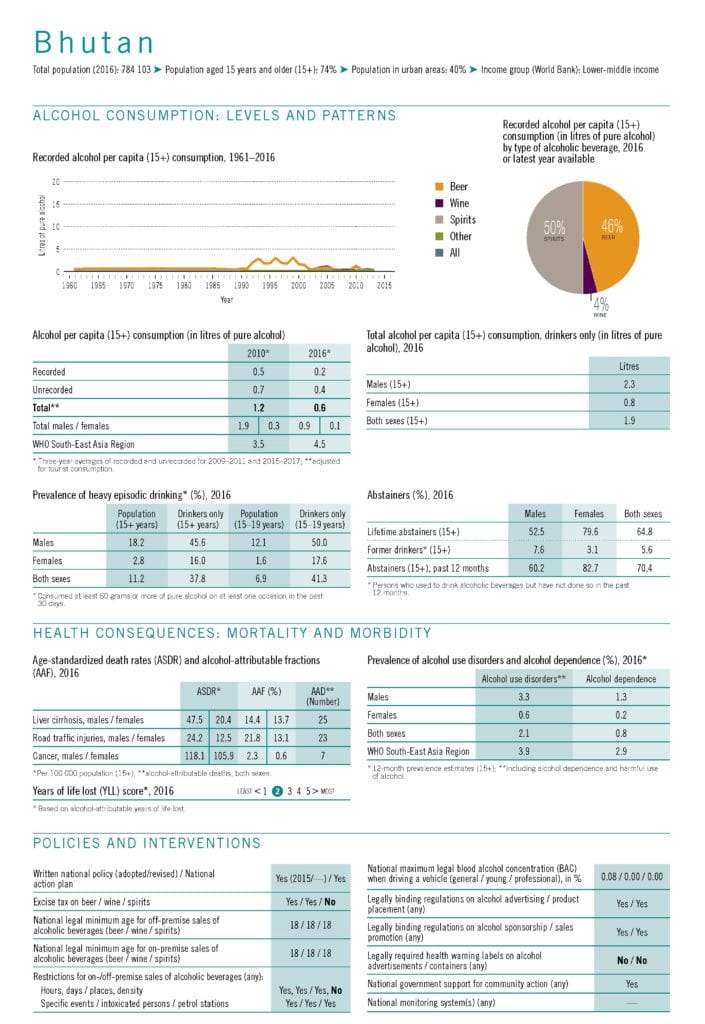Alcohol Availability and Harm in Bhutan
Alcohol harm in Bhutan is significant and growing as more and more people develop alcohol problems.
Alcohol is highly available in Bhutan. According to a report published last June, there is one alcohol outlet for every 177 Bhutanese. While there are strictly enforced bans on illicit alcohol, cheap industrial alcohol is easily available in retail stores.
This high availability and lack of implementation of alcohol laws are leading to increasing alcohol problems among the Bhutanese people.
A survey found,
- In eastern Bhutan more than 58% of the respondents had alcohol use disorders.
- In Thimphu, of the 36.4% of adults who had consumed alcoholic beverages in the past year, 10.5% engaged in binge alcohol use.
- In rural areas, as much as 50% of the grain harvest of each household is used to brew alcohol each year.
- Underage alcohol use is a growing problem.
As Movendi International previously reported the country is facing an addiction epidemic with the increased exposure to alcohol and other drugs and lack of policy implementation.
Heavy costs of alcohol problems
As recent WHO data shows, alcohol use prevalence is very low in Bhutan, with the vast majority of people 15+ years old abstaining from alcohol. But heavy episodic alcohol use among consumers is very high. And recent trends are going into the wrong direction, especially among youth and minors.
Alcohol use problems come at a high cost for the Bhutanese government. The direct cost of treating one alcoholic patient is estimated at Ngultrum 1,22,000, contributing to the escalation of health care costs. The health costs along with social and economic costs of alcohol are growing further in the country.
The country’s official statistics agency reports that the socioeconomic cost of alcohol amounted to Ngultrum 5 billion, about $70 million, in 2014 – four times higher than the revenue generated by alcohol sales.
Need for stronger alcohol policy implementation
Bhutan has an alcohol control policy in place. The National Policy and Strategic Framework to Reduce Harmful use of Alcohol was adopted in 2016. The policy contains measures which can reduce alcohol consumption and harm if implemented correctly.
Nevertheless,
- weak enforcement of laws,
- weak coordination among implementing agencies, and
- lack of clarity among local governments on their enforcement authority
have been recognized as major barriers to effective implementation of the law. By strengthening the implementation of these laws the country can reduce the growing alcohol harm.
The Bhutanese government is taking further measures to reduce alcohol harm, such as the recent tax reform through the new GST Bill 2020. The bill contains a 20% Excise Equalisation Tax on all unhealthy commodities, as well as a 100% tax on alcohol and tobacco.

